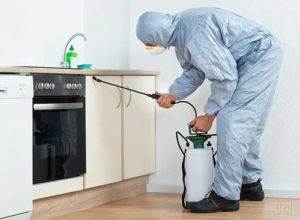Long Distance Driving Service transforms a stressful trip into a luxurious and personalized journey. Escape the hassle of crowded stations and tight schedules by choosing a door-to-door ride.
Chauffeur services prioritize comfort, reliability, and professionalism, making them perfect for business professionals who need to keep working during their travels. They also offer flexibility and customization, making them an ideal choice for those who have unpredictable travel plans.

Many drivers are required to embark on long distance drives at some point or may have a habit of doing so on a regular basis due to their commute or work requirements. In these situations, hiring a chauffeur service is a safe and convenient option for long-distance trips. You can leave the navigating and driving to the professionals, which allows you to relax, catch up on sleep, or enjoy the scenic scenery along your route.
Professional chauffeur services offer a variety of safety features to ensure the security and comfort of their passengers. They provide ongoing training and refresher courses to keep their chauffeurs up-to-date on the latest safety practices, emerging technologies, and industry regulations. Additionally, they have dedicated helplines or personnel available to assist passengers with any unforeseen circumstances during the trip.
It’s also recommended to plan your trip during the day when traffic is lighter and fatigue levels are lower compared to nighttime driving. When possible, it’s best to share the drive with a passenger to reduce driver fatigue and maintain concentration throughout the journey. Additionally, utilizing cruise control can help maintain a constant speed and increase fuel efficiency while on the road, but be sure to monitor changing road conditions and traffic.
Convenience
Long distance chauffeur service offers a high level of convenience and comfort for passengers. This service is especially useful for business travelers, who need to travel across large distances on a regular basis. Chauffeurs are trained to cater to every passenger’s needs and go out of their way to make sure the ride is enjoyable. They are also familiar with the area and routes, which means they can take the shortest and fastest route to save time and energy. Additionally, chauffeur services are always on time, which makes them a convenient and cost-effective alternative to taxis and public transportation options.
In addition to a comfortable ride, luxury vehicles offered by chauffeur services are designed to provide a top-of-the-line travel experience. These vehicles are equipped with the latest amenities and are suitable for all types of travel, including long-distance trips. They are ideal for special occasions, such as weddings, proms, and corporate events. Furthermore, chauffeur services can accommodate special requests, such as extra luggage or wheelchairs. This allows passengers to relax and enjoy their journey without worrying about the safety of their belongings.
Another advantage of long-distance chauffeur services is that they can be scheduled at any time, which is particularly helpful for business travelers who need to meet a tight deadline. They can be scheduled for pickup and drop-off at any location, allowing passengers to get to their destination quickly and efficiently. Additionally, chauffeur services can be used for leisure travel, making it easy to explore local attractions and enjoy a stress-free trip.
While air travel might be the most efficient method of traveling long distances, it can be very stressful and inconvenient. It is a good idea to hire a chauffeur service instead of flying, especially if you have small children or pets. Moreover, chauffeur services can be very beneficial for families who need to travel long distances on a regular basis.
Long-distance chauffeur services offer a seamless door-to-door experience, eliminating the need for passengers to navigate through transportation hubs and wait for rides at designated pick-up points. This is a huge benefit, especially when traveling in unfamiliar areas. Additionally, they are more affordable than Uber or traditional taxis and offer a variety of insurance options to protect passengers against any unexpected circumstances.
Flexibility
Long-distance car ride services offer passengers a high degree of flexibility and customization. This allows passengers to enjoy their journey in a luxurious vehicle tailored to their needs and preferences. It also provides them with the peace of mind that their security and privacy is protected. This is a key feature of chauffeur services that sets them apart from other transportation options such as Uber and taxis.
Using chauffeur services for long distance trips can be much more convenient than driving yourself or taking public transportation. You can book your trip through an online platform or app and customize the details according to your schedule and plans. Moreover, you can track your driver and get real-time updates in case of any issues or delays. Many leading car ride services also have responsive customer service representatives who can help you with any queries.
Another advantage of hiring a chauffeur for long distance travel is that you can save time and effort by not having to deal with traffic and parking. This is especially helpful when traveling with children or pets. You can also use the extra time to catch up on sleep or enjoy the scenery. Lastly, you can avoid the stress of traveling by air and the hassle of long check-in lines at airports.
Although long distance car ride services may seem like a luxury option, they are actually a cost-effective alternative to renting a car or taking public transportation. In addition, they can also save you money on fuel costs, tolls, and parking fees. In addition, they can also reduce the wear and tear on your own vehicle. Moreover, most chauffeur services provide a wide range of luxury vehicles that are designed for comfort and convenience.
Reliability
Long distance driving services offer reliability & expertise for those who need to travel long distances. From chauffeur service to shuttle services, these options provide a luxury experience while eliminating the hassle of long road trips. These services cater to many needs ranging from families traveling across the country for relocation to business travelers looking for convenience and comfort.
Chauffeur services place a strong emphasis on professionalism and reliability. They use advanced scheduling software to ensure drivers arrive on time. They also take into account weather conditions, traffic delays, and other potential issues when planning routes. Lastly, they monitor driver safety and compliance with Hours of Service regulations. This helps them maintain a high standard of service while improving operational efficiency and reducing costs.
In addition, chauffeur services utilize luxury vehicles to deliver a premium travel experience. These vehicles are designed to offer maximum comfort & safety, making them an ideal choice for long distance travel. This is especially true for those traveling with small children or pets who require around-the-clock attention and care.
Additionally, long distance driving service providers focus on maintaining their fleet of vehicles. They use tools like Super Dispatch’s vehicle maintenance schedule to ensure their vehicles are maintained according to factory recommendations. This ensures the vehicle is in top condition and reduces the likelihood of breakdowns during long-haul transport operations. This is especially important for long-distance auto transport services that require frequent stops and extended periods of driving. This is because long-distance driving can be exhausting for drivers, increasing the risk of fatigue and a decrease in driving safety.








